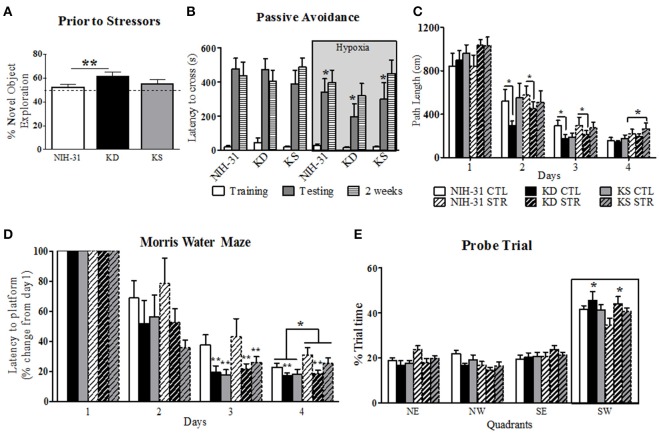Figure 3.
Diet and stress-induced effects on behavioral performance prior to and during daily exposure to stressors. (A) KD-fed rats showed greater percentage of novel object exploration compared to NIH-31 diet. This improvement occurred regardless of changes in locomotor activity (not shown). No differences in total distance traveled or speed were observed in any of the groups. The dotted line represents chance exploratory preference. (B) Hypoxia exposure prior to and following training trials significantly decreased latency to cross 24 h later (shadedbars) in the passive avoidance test. This impairment, however, was not present 2 weeks later (dashed bars). (C) KD-fed rats displayed shorter path lengths on days 2 and 3 of testing in the Morris water maze. Stress significantly increased path length on day 4 of testing, regardless of diet. (D) Morris water maze performance was significantly improved in both KD and KS groups on day 3, regardless of stress, and was impaired by stress on day 4. KD feeding prevented stress-induced impairments in performance on day 4 (E) Percentage of trial time spent in each quadrant during probe trial. KD-fed rats spent more time in target quadrant (SW) than NIH-31-fed groups. Data are presented as mean ± S.E.M. (n = 9–10/group). *p ≤ 0.05; **p < 0.01.

